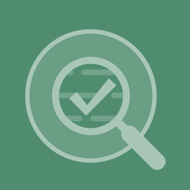Published: 4th April, 2025
Contents
Round up of recent bpacnz publications: Vitamin D, Atrial fibrillation, Recovery at Work

Vitamin D supplementation: an update

Vitamin D supplementation is well established for some groups, e.g. older frail people with limited sun exposure, and can be prescribed based on the patient’s risk of deficiency without testing in most cases. However, newer recommendations for vitamin D prescribing and testing may be less familiar for some clinicians. For example, in New Zealand, supplementation is recommended in all exclusively and partly breast-fed infants up to age one year. Vitamin D supplementation continues to be recommended for pregnant people at risk of deficiency .
Read the full article here. A B-QuiCK summary is also available.
Atrial fibrillation case study quiz

bpacnz recently published an interactive case study quiz on atrial fibrillation, following the story of Ken Henderson, a 67-year-old male who presents with concerns about a “racing heart”. Are there any aspects of Ken’s presentation and history that give you an increased cause for concern? Do you feel confident you can set Ken on a positive path towards long-term control? Test your knowledge with the case study quiz here* and earn CPD points.
Read the atrial fibrillation article here. A B-QuiCK summary is also available.
* You will need to log-in to your “My bpac” account to complete the quiz; sign up for a free account, here
Recovery at Work peer group discussion

Last month, bpacnz published a summary of key points on the ACC Recovery at Work process, accompanied by a series of questions that can be used as discussion points for peer groups or self-reflection of practice. View the peer group discussion here. For an overview of the Recovery at Work programme, read the main article here. A B-QuiCK summary and case study quiz are also available.
What key learning points did you take away from reading these resources? Is there anything you are still unsure about? What else would you like to know?
We are compiling questions to inform a discussion with an expert panel, and this is your last chance to let us know about anything you would like us to explore in more detail. This may include aspects of this process that require further explanation or challenges you have encountered that you would like us to address on your behalf. Send your questions and feedback to: editor@bpac.org.nz
Varenicline (Champix) tablets now available
Varenicline (Champix) tablets have been relisted on the Pharmaceutical Schedule (since 1st April), after being unavailable since 2021 due to the detection of potentially carcinogenic levels of nitrosamines; read more here. This manufacturing issue has now been resolved; however, it has been reported that stock may be limited until the middle of the year.
Varenicline is the most effective pharmacological option for smoking cessation and is funded with Special Authority approval for patients who have been unsuccessful in quitting with other cessation medicines. Three months of treatment is funded with each Special Authority approval; this consists of a four week starter pack, followed by an additional eight weeks of treatment. The course can be repeated after six months if needed with renewal of Special Authority.
In rare cases, varenicline has been linked to neuropsychiatric symptoms and suicidal behaviour, therefore, patients should be advised to stop taking the medicine and to seek medical care if they experience changes in mood, behaviour or thinking: see Prescriber Update for further information.
For further information on smoking cessation treatments, including varenicline, see: https://bpac.org.nz/2024/smoking.aspx
Proposal to fund Estradot patches
Pharmac has reconsidered its decision to move to a single funded brand of oestradiol patches (Estradiol TDP Mylan; as reported in Bulletin 113), and is seeking feedback on a proposal to fund Estradot as an alternative brand. It is proposed that from 1st December, 2025, both Estradiol TDP Mylan and Estradot brands of oestradiol patches would be funded without restriction. However, stock may continue to be influenced by ongoing supply issues and people may not always have access to their preferred brand.
Consultation closes Tuesday, 22nd April; a decision is expected to be made in June. This link contains an online form to complete.
For further information on menopausal hormone therapy, see: https://bpac.org.nz/2019/mht.aspx
Proposal to make it easier to access Mirena and Jaydess
Pharmac is seeking feedback on a proposal to fund the levonorgestrel intrauterine systems Mirena and Jaydess on Practitioners Supply Order (PSO) from 1st July. This will make it easier for patients to access these contraceptives, by removing the need for patients to first collect the Mirena or Jaydess system from a pharmacy and make another appointment to have it placed. Up to 25 Mirena devices would be able to be ordered on PSO, and up to ten Jaydess devices. Pharmac is also proposing to increase the number of Jadelle implants that can be ordered on PSO from three, to 20.
Consultation closes 4 pm, Friday, 25th April. This link contains an online form to complete, or feedback can be emailed directly to: Consult@Pharmac.govt.nz.
For further information on long-acting contraceptives, see: https://bpac.org.nz/2021/contraception/long-acting.aspx
Medicine news: Quetiapine, ranitidine
The following news relating to medicine supply, of particular interest to primary care, has recently been announced. These items are selected based on their relevance to primary care and where issues for patients are anticipated, e.g. no alternative medicine available or changing to the alternative presents issues. Information about medicine supply is available in the New Zealand Formulary at the top of the individual monograph for any affected medicine and summarised here.
Pharmac is advising of an upcoming supply issue affecting quetiapine 25 mg tablets due to shipping delays. An alternative brand, Quetiapine Viatris, was listed on the Pharmaceutical Schedule from 1st April. It is manufactured in the same factory as the original funded brand (Quetapel) and is available in two pack sizes (30 tablets and 500 tablets). However, Quetiapine Viatris is not Medsafe approved and will need to be prescribed for supply under Section 29 of the Medicines Act 1981. Re-supply of Quetapel is expected by the end of April, 2025.
Pharmacists should discuss with patients that the appearance of the blister pack of Quetiapine Viatris differs from their usual brand: it is a different shape and colour and contains Japanese writing on the foil packaging, but the tablets themselves remain the same. A patient information handout is available here.
In an email to healthcare professionals, Aspen New Zealand has advised that ranitidine (Zantac) 150 mg and 300 mg tablets, commonly used for dyspepsia and heartburn, have received Medsafe registration and are now available to pharmacies. Ranitidine, a histamine-2 receptor antagonist, is classified as a pharmacy-only medicine and is available over-the-counter.
Ranitidine had been unavailable in New Zealand (and Australia) since 2019 because of concerns about the presence of nitrosamine impurities in the medicine. Ranitidine (Zantac) has since been reformulated and is reported by Aspen to have been registered by Medsafe in January, 2025. Zantac became available again from 1st April, 2025.
Denosumab prescribing recommendations for osteoporosis
Since 1st March, 2025, denosumab (Prolia; subcutaneous injection) has been funded with Special Authority approval for patients with osteoporosis in whom standard treatment with bisphosphonates is ineffective, intolerable or contraindicated (as reported in Bulletins 111 and 115). Special Authority criteria can be found here. Osteoporosis New Zealand (ONZ) and the Fracture Liaison Network New Zealand (FLNNZ) have jointly developed recommendations for healthcare professionals on its use. The guide covers what to consider before prescribing, recommendations for the use of denosumab in patients with chronic kidney disease, monitoring following dosing and guidance on discontinuation.
 Key considerations when prescribing denosumab (Prolia)
Key considerations when prescribing denosumab (Prolia)
Denosumab requires ongoing subcutaneous injections every six months; rapid bone resorption occurs following abrupt cessation, increasing the risk of rebound fractures. Prescribers must ensure that denosumab is only administered to patients who understand and agree to life-long treatment and monitoring.
Another key consideration is the risk of hypocalcaemia: renal function and serum calcium levels must checked prior to prescribing (and after administration in patients at risk of hypocalcaemia), particularly in patients with chronic kidney disease. Patients should also have adequate vitamin D levels, and be prescribed calcium supplements if they are at risk of calcium deficiency.
View the full recommendations here.
Alert Communication update: Heavy metal poisoning with Ayurvedic products
In March, 2024, Medsafe issued an Alert Communication about lead poisoning associated with the use of Ayurvedic products, a form of traditional Indian medicine, typically derived from plants, but which also may contain mineral, metal or animal substances (as reported in Bulletin 94). This communication was made following eight notifications of people with lead poisoning with exposure to Ayurvedic products being the suspected cause. Medsafe has now published an update with new information that recent testing of samples of Ayurvedic products in New Zealand contain high levels of arsenic and mercury. Click here for details of affected products; these products are in the process of being removed from the New Zealand market.
Medsafe is advising healthcare professionals to ask patients presenting with unexplained symptoms and signs (e.g. abdominal pain, nausea, vomiting, diarrhoea, headaches) about their use of traditional remedies, including Ayurvedic products, and to consider the possibility of heavy metal poisoning in patients taking these products. Contact the National Poisons Centre (0800 764 766) if a patient is suspected to have heavy metal poisoning, and if possible, collect a sample of the implicated product so that it can be tested by Medsafe.
For further information on lead and mercury poisoning, see: https://bpac.org.nz/2021/lead.aspx and https://www.tewhatuora.govt.nz/publications/the-environmental-case-management-of-mercury-exposed-persons
Te Puna - A new national breast screening system introduced
BreastScreen Aotearoa is implementing a new national breast screening system – Te Puna, replacing various IT systems that are currently in use across the country. Some regions transitioned to Te Puna in February/March (the Midland region in the North Island and all of the South Island); remaining regions are expected to transition by August.
The new population-based system is designed to automatically identify eligible females and invite them to enrol in the National Breast Screening Programme. Eligible females will be sent a personalised link through email and text message, where they can then enrol in the programme, and book/reschedule mammogram appointments. Letters with a QR code to access the personalised link will also be sent out to encourage eligible females to enrol and/or to remind them that breast screening is due and to book an appointment. Te Puna will be able to be accessed via the Zero Data initiative, so mobile data will not be required in most cases.
Breast screening age being extended. Females aged between 45 and 69 years are currently eligible for free mammogram screening every two years. This age range is being progressively extended to females aged 70 – 74 years. This change has already occurred in Nelson-Marlborough; the rest of the country is expected to transition over the next four years, starting from October, 2025.
Consultation on health workforce regulation
The Ministry of Health, Manatū Hauora, has released a consultation on improving regulation of healthcare workers, with the overall aim of ensuring that all people in New Zealand have timely access to quality healthcare. Feedback is being sought from a range of people, including healthcare professionals, on four particular areas:
- Making sure regulation puts patients first
- More streamlined and efficient regulation
- Providing for right-sized forms of regulation
- Ensuring regulation is future-proofed
Read the full consultation, here. A summary is also available, here.
Submissions close Wednesday, 30th April; you can directly submit a response here. The Royal New Zealand College of General Practitioners (RNZCGP) is also collecting responses from members to inform a College submission (due by April 15th).
NZF updates for April + prescribing tips for colchicine
Significant changes to the NZF in the April, 2025, release include:
- Monograph added on clascoterone (topical cream; not funded), a potent androgen receptor antagonist, indicated for acne in patients aged 12 years and over
- Tendinopathy included as an adverse effect in the therapeutic notes for statins
- Updates to the following sections in the rosuvastatin monograph: cautions, pre-treatment screening, monitoring and adverse effects
- Cautions, contraindications, hepatic and renal impairment advice and patient advice have been updated in the sulfasalazine monograph. New pre-treatment screening and monitoring information has also been added.
You can read about all the changes in the April release, here. Also read about any significant changes to the NZF for Children (NZFC), here.
This month, the NZF team highlight the risk of serious toxicity associated with colchicine:
- When prescribing colchicine, check the patient’s renal and hepatic function, age and concomitant medicines
- Limit prescriptions to the anticipated number of tablets required; consider monthly dispensing for gout prophylaxis
- Consider dispensing with a child-resistant closure
- Ensure the patient clearly understands the dosing instructions, and are aware:
- That colchicine can cause serious toxicity if inadvertently taken or not taken as prescribed
- To stop taking colchicine and seek medical care if they experience nausea, vomiting, diarrhoea or abdominal pain or a burning sensation of the throat, stomach or skin
- To store the medicine out of sight and reach of children
- To take any unused (no longer needed) or expired colchicine to their local pharmacy for safe disposal
Further guidance is available from the NZF in the colchicine monograph, or see the bpacnz focus on colchicine: https://bpac.org.nz/Bulletin/bestpractice/114.aspx#7. A Prescriber Update article is also available: https://www.medsafe.govt.nz/profs/PUArticles/March2025/Factors-contributing-to-colchicine-toxicity.html.
Upcoming Goodfellow Unit webinars
The Goodfellow Unit, University of Auckland, is hosting several free access webinars in April. These webinars are intended to provide topical and relevant health information for primary care clinicians. Continuing professional development (CPD) points are also available. Webinars are often recorded and available to watch at a later date. Upcoming webinars include:
- COPD: Improving quality of care, presented by Dr Jo Scott-Jones and Professor Bob Hancox. This webinar will be held on Tuesday, 8th April, from 7.30 pm. Click here to register.
- Premenstrual syndrome and Premenstrual dysphoric disorder, presented by Dr Nicky Keay. This webinar will be held on Tuesday, 22nd April, from 7.30 pm. Click here to register.
- Vitamin D use, and Chest, pelvic and hip injuries in the elderly, a Te Whatu Ora; Te Tiri Whakāro: Sharing Knowledge session:
- Professor Ben Wheeler will provide an update on vitamin D use in pregnancy, infants and children
- Dr Guy Melrose will focus on chest, pelvic and hip injuries in older people
- Dr Sue Tutty will provide clinical updates
This webinar will be held on Tuesday, 29th April, from 7.30 pm. Click here to register.
A webinar on navigating ADHD treatment was recently held on Tuesday 1st April. If you missed it, view a recording of the webinar here.
 Medical Factorium: Men…if your mum’s dad was bald, does that mean you will be too?
Medical Factorium: Men…if your mum’s dad was bald, does that mean you will be too?
Every now and then, patients ask “why?” and the answer eludes us. In this occasional bulletin segment, we attempt to answer some of those curious questions.
The question: Male pattern baldness is frequently blamed on genes from the maternal side of the family, but is your mother’s father being unfairly blamed?
Read more
The idea that the maternal grandfather is responsible for male pattern baldness (androgenetic alopecia) may have stemmed from the initial discovery of a single nucleotide polymorphism in the gene that codes for androgen receptors located on the X chromosome.1 However, while almost all males with male pattern baldness possess this specific polymorphism, observational studies searching for gene variants have established its presence in non-balding males as well.1 In actual fact, male pattern baldness is a polygenic trait with potentially more than 250 gene loci influencing the overall phenotype, e.g. distribution pattern, age of presentation.1–3 These genes are located on both autosomal and sex-linked chromosomes inherited from both the mother and the father.1, 3
Androgens, testosterone and dihydrotestosterone (DHT), affect the hair follicle cycle.2 Testosterone is the main circulating androgen that gets converted to DHT by 5-alpha reductase. DHT binds with a high affinity to androgen receptors in hair follicles and activates certain genes that result in hair loss through shortening of the anagen (growth) phase of the hair cycle and miniaturisation of the hair follicles.3–5 People with male pattern baldness are often more sensitive to the effects of DHT because they can have increased activity of 5-alpha reductase and greater androgen receptor density and activity which accelerate hair loss; these attributes are also thought to be genetically inherited (from both the mother and father).4
Although genetics and hormones have a major role in the development of male pattern baldness, multiple other factors can also contribute, including increasing age, stress, inflammation (e.g. obesity, hypercholesterolaemia, hypertension, diabetes), nutritional deficiencies and smoking.1, 2
In summary, Mum’s Dad shouldn’t take all the blame. There are multiple factors that influence male pattern baldness that cannot be controlled, and just because Grandpa (or Dad) is bald, doesn’t mean you will be too. All there is to be done is to embrace it (or consider trialling treatment but that’s a topic for another day).
References
- Tai T, Kochhar A. Physiology and medical treatments for alopecia. Facial Plastic Surgery Clinics of North America 2020;28:149–59. doi:10.1016/j.fsc.2020.01.004.
- Katzer T, Leite Junior A, Beck R, et al. Physiopathology and current treatments of androgenetic alopecia: going beyond androgens and anti‐androgens. Dermatologic Therapy 2019;32. doi:10.1111/dth.13059.
- DermNet. Male pattern hair loss. 2015. Available from: https://dermnetnz.org/topics/male-pattern-hair-loss (Accessed Apr, 2025).
- Dakkak M., Forde K., Lanney H. Hair loss: Diagnosis and treatment. 2024. Available from: https://www.aafp.org/pubs/afp/issues/2024/0900/hair-loss.html.
- Aukerman EL, Jafferany M. The psychological consequences of androgenetic alopecia: A systematic review. J of Cosmetic Dermatology 2023;22:89–95. doi:10.1111/jocd.14983.
View previous Medical Factorium items here.
Do you have a clinical oddity that you would like us to investigate, or better yet, can you share a fascinating medical fact with our readers? Email: editor@bpac.org.nz
 Paper of the Week: Early use of combination lipid-lowering treatment may be better for reaching LDL-C targets
Paper of the Week: Early use of combination lipid-lowering treatment may be better for reaching LDL-C targets
Hypercholesterolaemia is an important modifiable risk factor for cardiovascular disease (CVD). Standard management for most patients with high CVD risk involves prescribing a statin to reduce low-density lipoprotein-C (LDL-C) below 1.4 mmol/L and ideally half of the patient’s baseline measurement. While any reduction in LDL-C is beneficial, many patients cannot reach recommended LDL-C targets with conventional statin treatment. Potential reasons for this include insufficient dosing or statin potency, intolerable adverse effects or poor adherence. High-intensity statin treatment (e.g. atorvastatin 40 – 80 mg or rosuvastatin 10 – 40 mg) is now widely recommended to improve LDL-C reduction, however, higher doses also increase the risk of adverse effects. Is there a better way to help patients achieve LDL-C targets and reduce their CVD risk?
A meta-analysis published in Mayo Clinic Proceedings investigated the efficacy of combination lipid-lowering treatment compared with statin monotherapy for reducing LDL-C. It was found that prescribing a statin in combination with ezetimibe is more effective for lowering LDL-C in patients with cardiovascular disease than only initiating a statin, with no increased risk of adverse effects. Combination lipid-lowering treatment was also associated with reductions in all-cause mortality, major adverse cardiovascular events and stroke incidence. Given cardiovascular guidelines (e.g. 2024 European Society of Cardiology (ESC) chronic coronary syndromes guidelines) typically recommend prescribing ezetimibe as an adjunct for patients who cannot meet LDL-C targets with statin monotherapy, and the rising popularity of initiating patients on multiple treatments early (e.g. dual antihypertensive treatment, guideline-directed medical therapy for heart failure), is it time for a fundamental shift in how we manage patients with hypercholesterolaemia as well?
What strategies do you trial for patients who cannot meet their LDL-C target while taking a statin? Do you increase the dose or are adverse effects usually a limiting factor? Do you change the type of statin? Do you use ezetimibe? Would you ever prescribe a statin and ezetimibe in combination when the need for lipid-lowering treatment is first identified?
Read more
- There were 14 studies that met criteria for inclusion (11 randomised controlled trials and three cohort studies)
- All combination lipid-lowering interventions included a statin and ezetimibe. Atorvastatin, rosuvastatin or simvastatin were used in 11 of the studies.
- Analysis involved data from 108,373 people with hypercholesterolaemia and history of ischaemic heart disease, of which 24,608 received combination lipid-lowering treatment; combination treatment group (ezetimibe + statin) mean age = 67 years; monotherapy group (statin) mean age = 68 years
- Co-morbidities were prevalent among the study population. Hypertension was reported in 49% of the combination treatment group and 68% of the monotherapy group, and diabetes was reported in 28% and 37% respectively.
- The study’s primary outcome was the change in mean LDL-C level from baseline, while secondary outcomes were all-cause mortality, cardiovascular disease morbidity and mortality, major adverse cardiovascular events, stroke risk, LDL-C < 1.8 mmol/L, adverse effects and discontinuation
- Overall, pooled data showed a significantly greater reduction in LDL-C from baseline was observed with combination lipid-lowering treatment compared to statin monotherapy (mean difference [MD] = -0.34 mmol/L, 95% confidence interval [CI] = -0.45 – -0.22)
- Significant reductions in all-cause mortality (odds ratio [OR] = 0.81, 95% CI = 0.67 – 0.97), major adverse cardiovascular events (OR = 0.82, 95% CI = 0.69 – 0.97) and stroke incidence (OR = 0.83, 95% CI = 0.69 – 0.91) were also observed in the combination lipid-lowering treatment group compared to the monotherapy group
- A reduction in CVD morbidity and mortality was observed but this was not statistically significant (OR = 0.86, 95% CI = 0.65 – 1.12)
- There was no significant difference in the risk of gastrointestinal or musculoskeletal adverse effects between treatment groups
- The network meta-analysis included studies that differentiated between high- and moderate-intensity statin treatment allowing comparison of different regimens
- LDL-C reduction with combination treatment was more profound with a high-intensity statin (HIS) compared to a moderate-intensity statin (MIS):
- HIS + ezetimibe vs HIS monotherapy; MD = -0.40 mmol/L, 95% CI = -0.75 – -0.03 and MIS + ezetimibe vs HIS monotherapy; MD = -0.19, 95% CI = -0.47 – -0.10
- Treatment with moderate-intensity statins in combination with ezetimibe caused a larger reduction in the incidence of major adverse cardiovascular events compared with either high-intensity or moderate-intensity statin monotherapy:
- MIS + ezetimibe vs HIS monotherapy; OR = 0.71, 95% CI = 0.67 – 0.75 and MIS + ezetimibe vs MIS monotherapy; OR = 0.76, 95% CI = 0.70 – 0.83
- Significantly lower discontinuation rates were observed with either moderate-intensity statin treatment in combination with ezetimibe or moderate-intensity statin monotherapy compared to high-intensity statin monotherapy
- Only one study compared the discontinuation rates of high-intensity statin treatment in combination with ezetimibe and high-intensity statin monotherapy; no significant difference was found
- The authors concluded that combination lipid-lowering treatment is safe and effective and should be considered from when treatment for hypercholesterolaemia is first required, especially in patients with high to extremely high CVD risk, e.g. following a CVD event. They also advocate for the inclusion of this approach as a first-line option in future CVD guidelines.
- It is noted this strategy was discussed in the 2023 ESC acute coronary syndrome guidelines, however, limited supporting evidence at the time meant the advice was not strongly recommended (only a potential consideration)
Banach M, Jaiswal V, Ang SP, et al. Impact of lipid-lowering combination therapy with statins and ezetimibe vs statin monotherapy on the reduction of cardiovascular outcomes: a meta-analysis. Mayo Clinic Proceedings 2025;:S0025619625000758. doi:10.1016/j.mayocp.2025.01.018.
For further information on prescribing-lipid lowering medicines in primary care, see:
 This Bulletin is supported by the South Link Education Trust
This Bulletin is supported by the South Link Education Trust
If you have any information you would like us to add to our next bulletin, please email:
editor@bpac.org.nz
 ASK A COLLEAGUE: Are they receiving these bulletins?
Sign up to our mailing list here
ASK A COLLEAGUE: Are they receiving these bulletins?
Sign up to our mailing list here
© This resource is the subject of copyright which is owned by bpacnz. You may access it, but you may not reproduce it or any part of it except in the limited situations described in the terms of use on our website.





